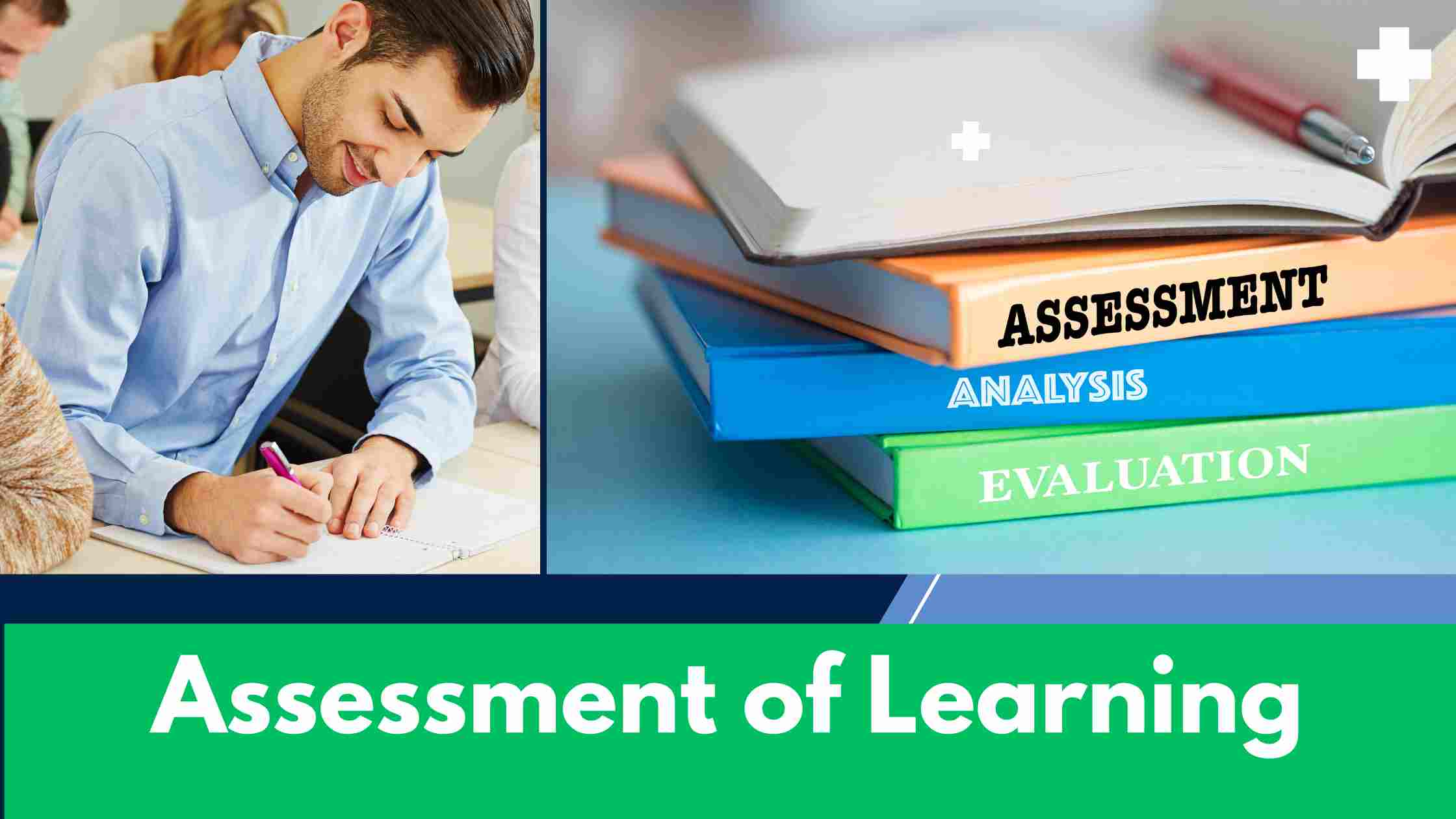Group Assessment: A Unique Approach to Evaluating Performance
Group assessment is an innovative method used to evaluate the performance of individuals in a collaborative setting. This approach involves assessing a group’s work as a whole rather than focusing solely on individual contributions. Doing so provides a comprehensive and holistic view of the group’s capabilities and allows for a more accurate evaluation of each member’s contributions. This unique approach has gained popularity in various educational and professional settings as it promotes teamwork, communication, and problem-solving skills. Additionally, group assessment encourages individuals to think critically, as they must analyze and reflect on themselves and others.
One notable advantage of group assessment is its ability to simulate real-world scenarios where collaboration and cooperation are essential. In professional environments, employees must often work in teams to achieve common goals.
What Is Group Assessment?
Moving on from the importance of individual assessment, we now focus on group assessment. Group assessment evaluates the performance and progress of individuals working collectively on a project or task. This approach has gained significant popularity in educational settings, as it encourages teamwork, collaboration, and the development of important interpersonal skills.
Group assessment evokes a sense of excitement and anticipation among students, allowing them to work together towards a common goal. It fosters a sense of camaraderie and shared responsibility, allowing students to learn from each other’s strengths and weaknesses. Moreover, group assessment enables students to develop essential skills such as communication, problem-solving, and negotiation, which are highly valued in today’s professional world.
However, it is worth noting that group assessment is one of today’s challenges. Unequal distribution of workload, differing levels of commitment among group members, and potential conflicts are common issues that may arise. It is crucial for educators to carefully design and manage group assessments, setting clear expectations and providing guidance to ensure fairness and effectiveness.
What Is the Purpose of Group Assessment?
Group assessment serves a specific purpose in educational settings. It allows students to collaborate and work together towards a common goal, promoting a sense of teamwork and fostering important skills such as communication, problem-solving, and critical thinking. The purpose of group assessment is to evaluate not only individual knowledge and abilities but also the collective efforts and dynamics within the group.
Through group assessment, students can learn from each other, exchange different perspectives, and develop a deeper understanding of the subject matter. It encourages active participation and engagement, as students are motivated to contribute their ideas and skills to the group’s success.
Furthermore, group assessment promotes the development of social skills and interpersonal competencies, which are highly valued in today’s professional world. Working in a team teaches students how to effectively communicate, listen to others, needs, and resolve conflicts. These skills are essential for successful collaboration in the workplace, where individuals often need to work together towards a common objective.
What Methods Are Used for the Assessment of Groups?
Moving on to the methods used for assessing groups, it is essential to have a systematic approach that effectively evaluates the group’s performance and individual contributions. Various methods are utilized to evaluate the group’s dynamics comprehensively.
Self and Peer Assessment is an effective method involving group members evaluating their contributions and those of their peers. This approach encourages self-reflection and accountability, promoting a sense of responsibility within the group.
Observation and Feedback is another valuable method used to assess group performance. This involves an expert or instructor observing the group’s interactions and providing constructive feedback. This method allows for real-time evaluation and enables groups to make immediate adjustments. Projects and presentations are commonly employed to assess a group’s collective efforts and outcomes. These projects allow groups to showcase their collaboration, critical thinking, and problem-solving skills. Additionally, group presentations allow for assessing communication and public speaking abilities.
Written reports and reflections are frequently used to assess the depth of understanding and individual contributions within a group.
How Do You Use Group Assessment in the Classroom?
Group assessment is essential for promoting collaborative learning and enhancing students’ interpersonal skills. Educators can create an environment that fosters teamwork and encourages active participation by incorporating group assessment into the classroom.
One of the students’ group assessments in the classroom is assigning group projects or tasks that require students to work together towards a common goal. This not only allows for the development of critical thinking and problem-solving skills but also promotes effective communication and cooperation among students. By evaluating the group’s performance as a whole, educators can assess the project’s overall success and identify areas for improvement.
Another way to utilize group assessment is through peer evaluation. Groups can provide feedback on their group members’ contributions, allowing for a more comprehensive assessment of individual and group performance. This method encourages students to reflect on their work, and the work of others promotes self-awareness and accountability.
Incorporating group assessment in the classroom provides students with valuable opportunities to develop essential skills for success in academic and professional settings.
What Is the Difference Between Individual Assessment and Group Assessment?
Individual and group assessments are commonly used methods of evaluating student learning in the classroom. While individual assessment focuses on evaluating a student’s performance and understanding individually, group assessment evaluates how well a group of students work together towards a common goal.
One key difference between individual and group assessments is the level of student involvement. In individual assessments, students are expected to work independently, showcasing their own knowledge and skills. This type of assessment allows for a more personalized evaluation of each student’s abilities and understanding. On the other hand, group assessment encourages students to collaborate and work together to achieve a shared objective. This method assesses individual understanding and the ability to communicate, cooperate, and contribute effectively within a team.
Another difference lies in the tasks and activities involved in each type of assessment. Individual assessments typically involve tasks that a single student, such as tests, quizzes, or essays, can complete. These tasks are designed to measure individual knowledge and skills. In contrast, group assessments often involve complex projects or presentations that require the contribution of multiple team members.
Benefits of Group Assessment
Now that we have explored the difference between individual assessment and group assessment, let us delve into the benefits of group assessment. Group assessment offers many advantages that can enhance the learning experience for students and promote a deeper understanding of the subject matter.
Collaborative learning is a key benefit of group assessment. Working together allows students to share their ideas, knowledge, and perspectives, fostering a more comprehensive understanding of the topic. This collaborative environment encourages students to think critically and consider different viewpoints, leading to a more well-rounded learning experience.
Moreover, group assessment promotes effective communication skills. Students must learn to effectively express their thoughts and ideas, listen actively to their peers, and engage in constructive discussions. These communication skills are essential for future professional settings and can greatly benefit students in their careers.
Another advantage of group assessment is the opportunity for peer learning. Students can learn from their peers’ strengths and weaknesses, gaining valuable insight and knowledge.
Effective Group Assessment Techniques
After understanding the benefits of group assessment, it is important to explore effective techniques that can be employed to ensure its success. Implementing such techniques can enhancpeers’overall experience for both students and educators, ultimately leading to improved learning outcomes.
One effective technique in group assessment is defining clear objectives and expectations. By clearly communicating the goals and criteria for assessment, students will better understand what is expected of them. This helps minimize confusion and ensures that all group members work towards a common goal.
Another technique is promoting effective communication. Encouraging open and respectful communication within the group enables students to collaborate effectively. This can be achieved through regular group meetings, where members can discuss their progress, address any challenges, and provide Feedback to one another. Utilizing digital platforms, such as online discussion boards or collaborative document editing tools, can also facilitate communication and enhance group interaction.
Additionally, assigning specific roles and responsibilities within the group can help distribute the workload and ensure that every member contributes to the assessment.
Group Assessment Advantages
Effective group assessment techniques have been proven to be valuable tools for evaluating the performance and progress of groups. However, it is equally important to recognize the advantages that group assessments bring to the table. These advantages not only benefit the students but also contribute to the overall success of the educational system.
One of the primary advantages of group assessments is the opportunity for collaboration and diversity of perspectives. When students work together in a group setting, they are exposed to different ideas, opinions, and approaches. This fosters a rich learning environment where individuals can learn from one another’s experiences and expand their own knowledge base.
Additionally, group assessments promote critical thinking and problem-solving skills. By actively engaging in discussions and group activities, students are challenged to think critically, analyze information, and develop effective solutions to problems. This enhances others academic abilities and prepares them for real-world scenarios where teamwork and problem-solving are essential.
Moreover, group assessments encourage accountability and responsibility.
Group Assessment vs. Individual Assessment
While group assessments have their advantages, it is important to consider the drawbacks of this approach compared to individual assessments. Group assessment, as the name suggests, involves evaluating the performance of a group as a whole rather than individual members. This method is often used in educational settings to promote student collaboration and teamwork skills. However, it is crucial to acknowledge that group assessments may not be suitable for all situations or individuals.
One major disadvantage of group assessments is the potential for free-riding or social loafing. This occurs when some members contribute less effort or rely on others to complete the task, leading to an unfair workload distribution and an unequal evaluation of individual abilities. Moreover, group dynamics can also lead to conflicts, disagreements, and power imbalances, which may hinder the effectiveness of the assessment process.
Another drawback of group assessments is the potential for the “dominant voice” phenomenon. In many groups, there tends to be one or a few members who dominate the decision-making process, overshadowing the contributions of others. This can lead to a lack of diverse perspectives and limit the overall quality of the assessment.
Group Assessment Tools and Methods
Group assessment is an effective way to evaluate a group’s performance”, as it allows for collaboration and the sharing of ideas. However, it is essential to utilize appropriate tools and methods to conduct a successful group assessment. These tools and methods ensure fairness and accuracy in the assessment process and provide valuable insights into the dynamics and productivity of the team.
One commonly used tool in group assessment is peer evaluation. This method involves team members rating each other’s contributions and performance. Peer evaluation encourages accountability and promotes a sense of responsibility among team members. Another effective tool is self-assessment, where individuals reflect on their own contributions and provide an evaluation of their performance. This encourages self-reflection and helps individuals identify areas for improvement.
In addition to these other’s group discussions and presentations, these are valuable methods for assessing team performance. These methods allow team members to showcase their knowledge, communication skills, and ability to work collaboratively. Additionally, project-based assessments allow teams to demonstrate their skills and knowledge in a practical setting.
The Importance of Collaborative Assessment
Collaborative assessment is essential to the educational process as it promotes active learning, critical thinking, and effective problem-solving skills. Educators create an environment that fosters teamwork, communication, and exchanging ideas by engaging students in collaborative assessment. This section will explore the importance of collaborative assessment in enhancing student learning and achievement.
Collaborative assessment encourages students to take ownership of their learning by actively participating in the assessment process. When students work together to evaluate their and their peers’ work, they develop a deeper understanding of the subject matter and gain valuable insights from different perspectives. Moreover, college abortive assessment allows students to engage in meaningful discussions, share knowledge, and provide constructive feedback to their peers, leading to a more comprehensive understanding of the topic.
Research has shown that collaborative assessment not only enhances student learning but also improves their academic performance. A study conducted by Johnson et al. (2014) found that students who engaged in collaborative assessment had higher achievement levels than those who underwent traditional assessment methods. This highlights the positive impact of collaborative assessment on student outcomes.
Enhancing Teamwork Through Group Assessment
As we have explored the importance of collaborative assessment in the previous section, it is now essential to delve into how teamwork can be further enhanced through group assessment.
Enhancing teamwork through group assessment can significantly contribute to the overall success of a team. It allows for a more comprehensive evaluation of individual contributions while fostering a sense of collective responsibility among team members. By implementing group assessment methods, such as peer evaluations and team-based projects, teams can better understand their strengths and weaknesses, leading to improved collaboration.
One effective approach to enhancing teamwork is through 360-degree feedback. This process involves gathering feedback from multiple sources, including peers, supervisors, and subordinates. 360-degree feedback promotes self-awareness and encourages team members to actively engage in the assessment process by providing a holistic view of an individual’s performance within the team. This, in turn, fosters a culture of continuous improvement and collaboration.
Furthermore, group assessment tasks allow team members to collectively work towards a shared goal.
Group Assessment for Employee Performance
Group assessment for employee performance
In today’s competitive business environment, organizations assess the performance of their employees effectively. Group assessment provides a unique approach to enhancing the accuracy and fairness of evaluating individual employees within a team setting.
Group assessment involves evaluating the performance of individuals based on their contributions to the overall success of a team project or task. This method recognizes that employees do not work in isolation but are today’s collaborative effort. By considering the collective output of a team, group assessment can capture the true impact and value each employee brings to the organization.
Research has shown that group assessments can lead to more comprehensive employee performance evaluations. It encourages employees to work cohesively, fostering a collaborative and supportive work culture. Moreover, group assessment promotes accountability and encourages employees to take ownership of their individual contributions, knowing their performance will impact the team’s overall success.
Organizations that implement group assessments can also benefit from improved team dynamics.
Best Practices for Group Assessment
In addition to understanding the importance of group assessments for employee performance, organizations must implement best practices to ensure the effectiveness and fairness of these assessments. By following these guidelines, companies can maximize their teams’ potential and foster a culture of continuous improvement.
Firstly, organizations must establish their own assessment criteria aligned with the company’s goals and values. These criteria should be communicated to employees beforehand, allowing them to understand what is expected of them and how their performance will be evaluated.
Secondly, ensuring that the assessment process is fair and unbiased is important. This can be achieved by involving multiple assessors who comprehensively understand the team’s dynamics and individual contributions. Additionally, combining quantitative and qualitative assessment methods can provide a more holistic view of employee performance.
Thirdly, regular feedback support for the success of group assessments providing constructive feedback enables employees to understand their strengths and areas for improvement and encourages ongoing growth and development.
Peer Evaluation in Group Assessment
In addition to implementing best practices for group assessment, peer evaluation is another crucial aspect that can enhance the effectteam’ss of the assessment process. Peer evaluation involves gathering Feedback from group members about the contributions and performance of their peers. This method allows for a more comprehensive and well-rounded assessment of individuals within the group.
One key advantage of peer evaluation is its ability to promote fairness and equity. Giving each group member an opportunity to evaluate their peers helps mitigate biases that might arise from the assessment process. This ensures that all members are evaluated based on their contributions and abilities.
Moreover, peer evaluation encourages accountability and responsibility within the group. When individuals know their peers will evaluate their performance, they are more likely to take their roles and responsibilities seriously. This can increase motivation and effort, as everyone strives to perform their best to avoid negative peer evaluations.
Additionally, peer evaluation fosters communication and teamwork. Through the Feedback received, individuals can gain insights into their strengths and areas for improvement.
Conclusion
Group assessment is a valuable tool in evaluating the performance and progress of a team. It involves assessing the collective efforts and contributions of individuals within a group. Group assessment aims to measure the group’s ability to work together, solve problems, and achieve common goals. Various methods, such as observation, self-assessment, and peer evaluation, can be used in group assessment.
Group assessment can enhance students’ collaboration and communication skills in the classroom. It encourages active learning and fosters a sense of responsibility and accountability among students. Group assessment allows for a more comprehensive evaluation of a team’s performance than individual assessment.
There are several benefits to using group assessment, including developing critical thinking skills, improved problem-solving abilities, and group teamwork. Effective techniques for group assessment involve clear guidelines, balanced participation, and constructive feedback.
In conclusion, group assessment is a powerful tool for evaluating teamwork and individual nonstudents.






[…] their collaborative experiences, reflect on their learning process, and set goals for improvement. Assess individual and group performance based on predetermined […]